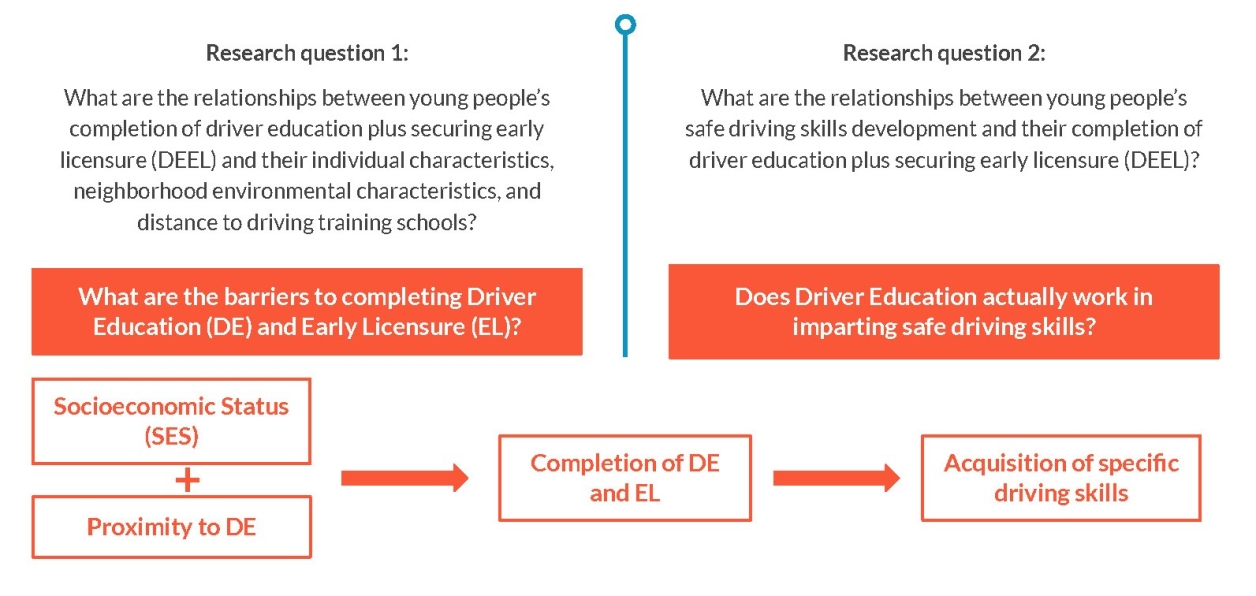Thesis: Jasmine Siyu Wu
Understanding Links Between Teen’s Access to Driver Education and Safe Driving Skills Development: Evidence from the State of Ohio
Objective: Teen drivers are at risk of dangerous driving circumstances due to immaturity and inexperience.
In an effort to impart safe driving skills, some states in the U.S. require teens to engage in driver education (DE) before a teen obtains a driver's license. With the waning federal and state involvement and fiscal support in DE, it might pose a barrier to teens obtaining the mobility that comes with early licensure as well as safe driving skills. Moreover, this barrier might be experienced unevenly across the population. This thesis focuses on Columbus Metropolitan Statistical Area (MSA) in Ohio to explore whether teen driving training is an equity issue linked to socioeconomic factors and access to driving resources and how DE completion relates to teens' safe driving skills acquisition.
Methodology: This thesis utilizes licensing data and innovative Virtual Driving Assessments (VDA) data from over 18,000 young license applicants in Ohio (under 25 years old) collected between 2017 and 2019. The author calculated variables describing young people's access to DE using publicly available datasets. Multilevel logistic regression models estimate the effects of individual and neighborhood-level characteristics on young drivers' participation in DE and early licensure. Chi-Square tests of independence compare the acquisition of safe driving skills examined by VDA tests between young people who completed DE and early licensure (DEELs) and those who didn't (non-DEELs).
Results: The logit modeling results highlight that economic status plays a significant role in determining teenagers' engagement with DE. Young people from lower socioeconomic status (SES) neighborhoods or homes are found to have limited access to driver's education despite living in low-density environments that necessitate car usage for mobility. This lack of access to DE exacerbates mobility barriers for these individuals. Furthermore, the Chi-Square tests find that non-DEELs exhibit less safe driving knowledge and skills, resulting in higher crash risks.
Conclusion: These empirical findings of disparities in accessing DE and EL that are associated with safe driving skills development motivate planning interventions to address equity issues in access to DE, such as subsidy programs that ease the barriers for lower-SES teenagers and families.


